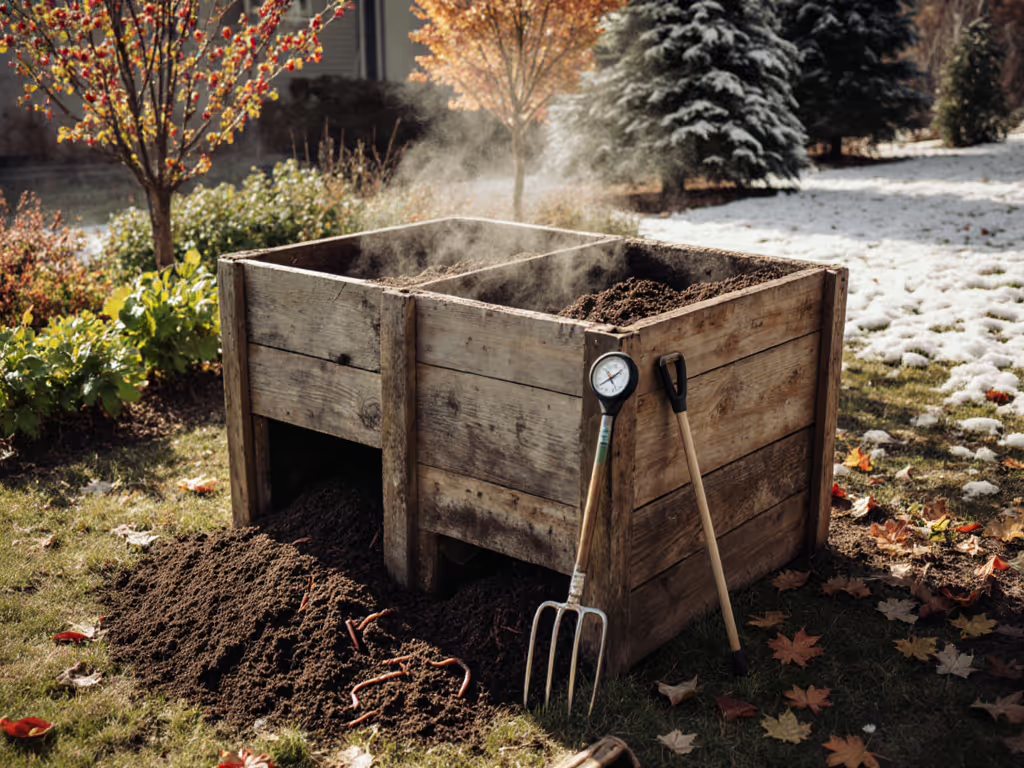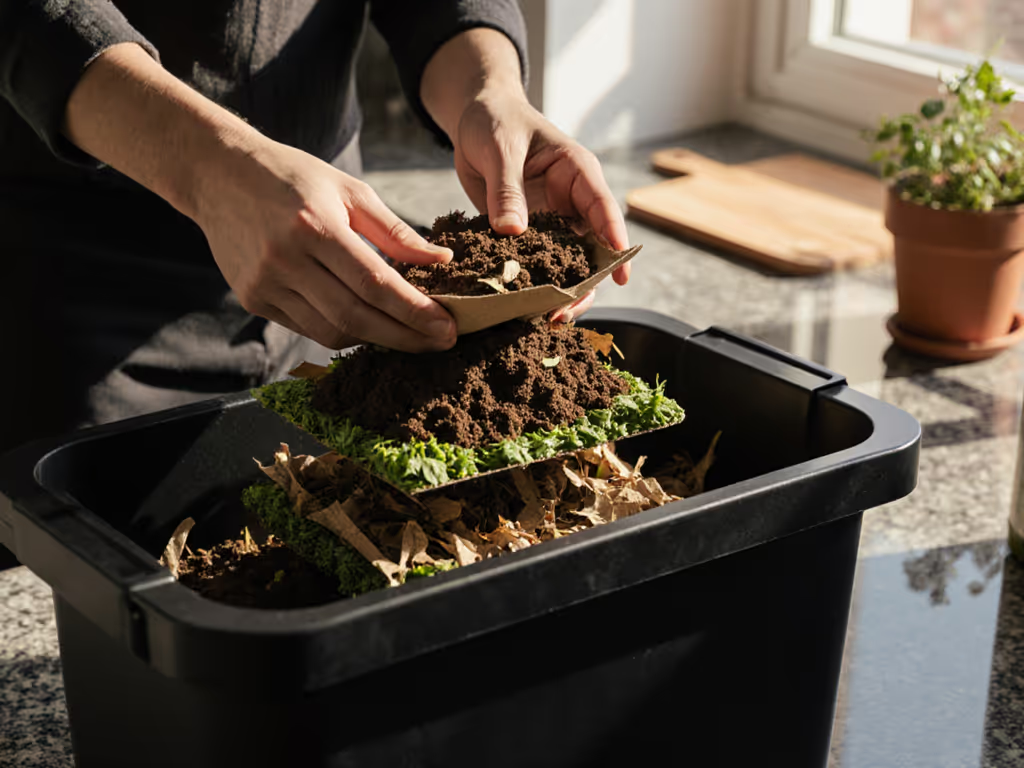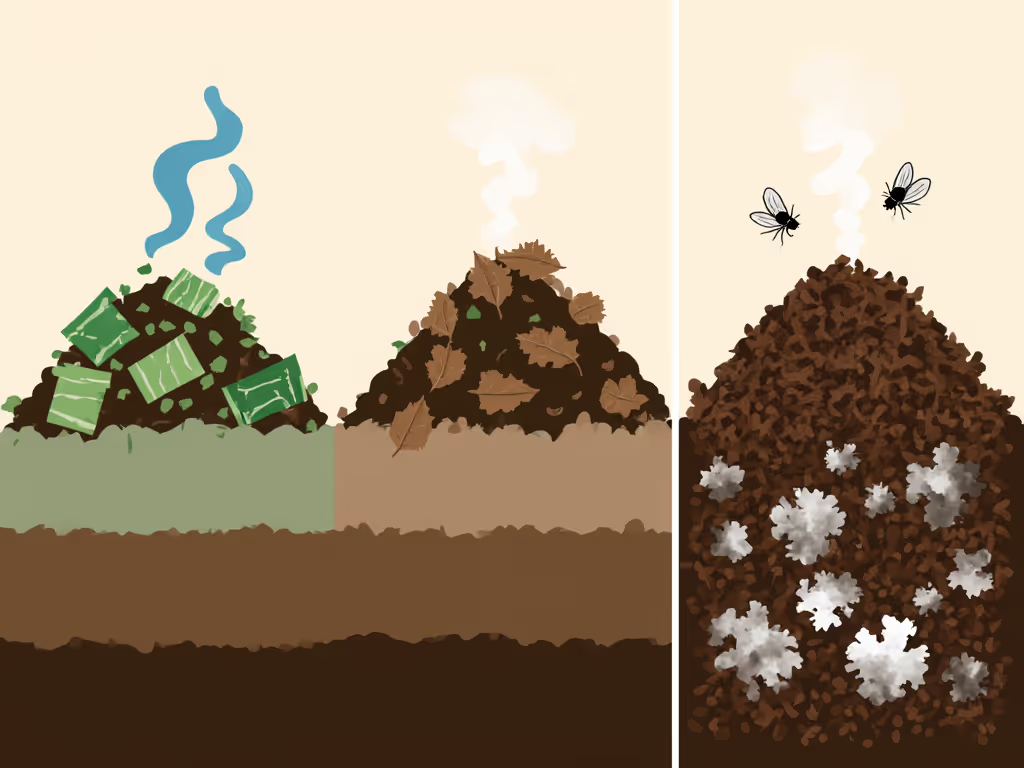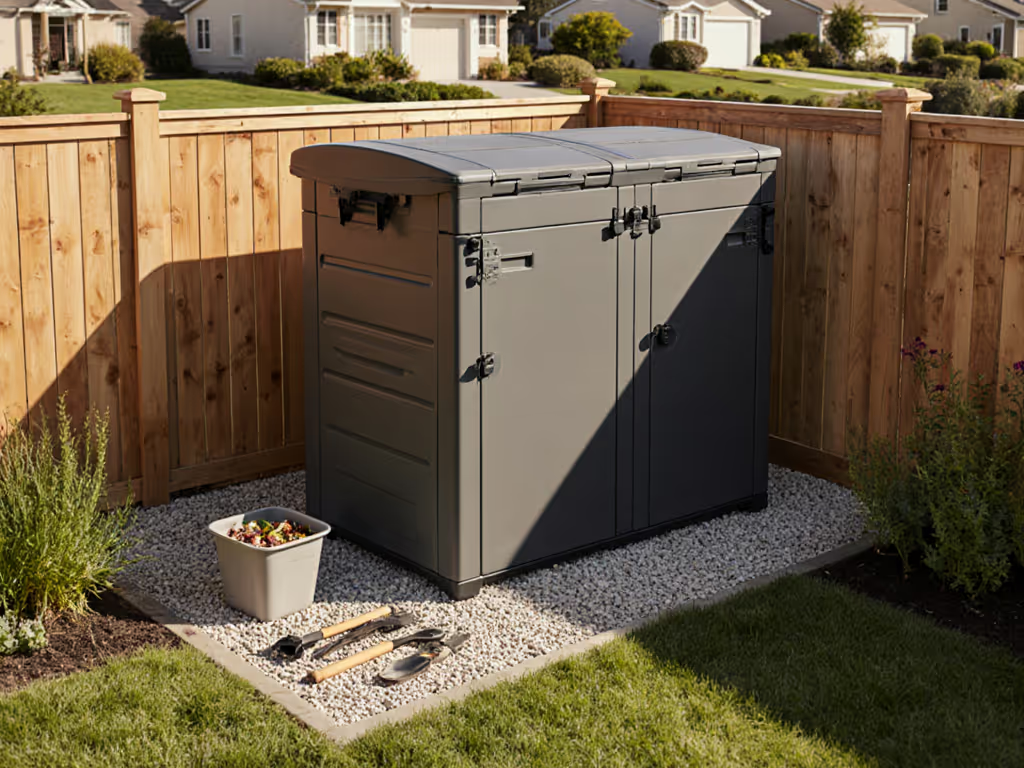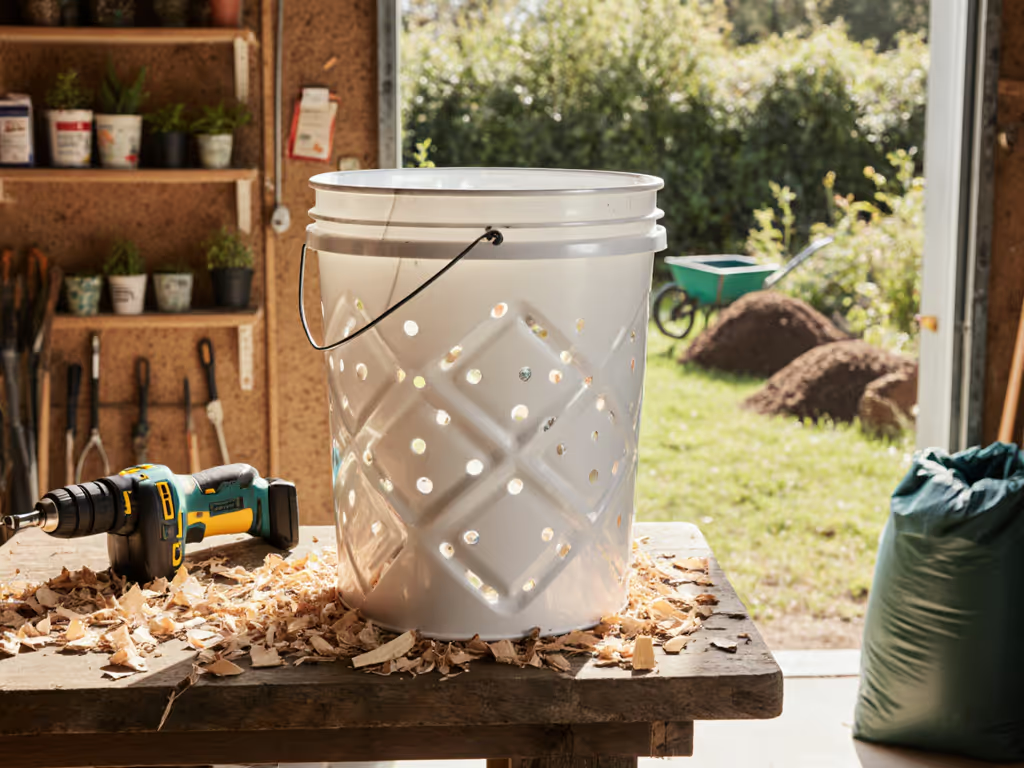Forget the myth of perfect backyard piles. In compact living spaces, compost green-brown ratio precision isn't academic, it's your armor against fruit flies and landlord complaints. Get the science of composting wrong, and your kitchen scraps ferment into a stinky science experiment. Get it right, and you transform coffee grounds and lettuce into quiet, odor-controlled black gold. Small space, big results (quiet, tidy, sealed, and neighbor-proof).
Why Your Apartment Compost Fails (And the Science Fix)
Most "composting for beginners" guides assume you have a backyard. They tout ratios like "30:1" without explaining why your indoor bokashi bucket stinks while your neighbor's outdoor pile thrives. The disconnect? Browns and greens aren't about color; they're about carbon and nitrogen chemistry.
As UNH Extension clarifies, effective compost chemistry requires roughly 30 parts carbon to 1 part nitrogen by weight. But here's the apartment twist: you measure by volume, not weight. Why? Space constraints mean you're using cups, not wheelbarrows. And volume ratios differ wildly from weight ratios because materials pack differently. A crumpled sheet of newspaper (brown) occupies far more space than a cup of coffee grounds (green), even though they're nearly equal in weight.
The Myth-Busting Breakdown
| Material Type | Carbon:Nitrogen Ratio | Examples | Common Apartment Mistake |
|---|
| "Greens" (Nitrogen Source) | 10:1 - 20:1 | Coffee grounds, fruit scraps, fresh vegetable trimmings | Assuming all kitchen scraps are "green" (eggshells? Not compostable!) |
| "Browns" (Carbon Source) | 30:1 - 100:1 | Shredded cardboard, dried leaves, crushed egg cartons | Relying on dense paper that mats instead of airy, shredded strips |
| Optimal Mix | 25:1 - 30:1 | 3 parts volume browns : 1 part volume greens | Using soggy newspaper instead of crisp, shredded carbon |
Key insight from soil science: Even "greens" are 90%+ carbon. Chicken manure (C:N 10:1) still has ten times more carbon than nitrogen. We call it "green" only because it's relatively nitrogen-rich. Your role? Dilute kitchen scraps (high nitrogen) with enough shredded browns to hit that 25:1-30:1 sweet spot. Get it wrong, and you get ammonia stink (too many greens) or a slow, dry pile (too many browns).
Ratio Rules for Tight Spaces: Beyond Backyard Logic
Why Standard Ratios Fail on Your Balcony
Backyard guides preach "3:1 browns to greens by volume." But that ratio assumes outdoor conditions: airflow, rain, and thermophilic microbes. In sealed, compost-in-container systems (worm bins, bokashi, electric tumblers), moisture and oxygen behave differently. Your studio apartment's controlled climate lacks the evaporation of outdoor piles, so you need more browns than textbook ratios suggest.
Take my 500-square-foot studio test: A standard 3:1 ratio made my lidded compost bin soggy within days. Switching to 4:1 (browns:greens) by volume using ultra-shredded cardboard strips solved it. Why? Airflow constraints in compact systems demand extra carbon to absorb moisture. Dense, unshredded paper mats and traps liquid; thin strips create oxygen channels.
The Quiet Compliance Hack
Quiet is compliance. And odor control hinges on balancing compost materials for your environment. In humid climates (like coastal apartments), I up the ratio to 5:1. In arid zones, 3.5:1 prevents desiccation. Here's how to adapt:
For indoor systems: Start with 4 buckets of shredded browns (paper/cardboard) per 1 bucket of kitchen scraps. Add a handful extra if using citrus or melons (high moisture). Toss in a sprinkle of bokashi bran to ferment scraps before adding to bins... this buys time for brown integration.
Troubleshooting Ratios Without a Lab
No C:N meter? No problem. These visual cues prevent disaster:
- Smells like ammonia/fish? → Too many greens. Fix: Stir in 2x your usual shredded browns. Freeze excess scraps until next drop-off.
- Pile feels dry/crumbly? → Too many browns. Fix: Add water-soaked coffee grounds or tea bags (no staples).
- Fruit flies or mold? → Greens exposed at surface. Fix: Bury scraps under 2" of browns; add rice husks for extra cover.
Action Plan: Perfect Ratios in 3 Steps (No Yard Required)
-
Prep Your Browns Right: Skip whole egg cartons. Shred cardboard/paper into 1/2"-wide strips (a paper shredder works; never use glossy mail). Store in a lidded container under the sink... totally lease-friendly. Pro tip: Spray strips lightly with water to prevent dust, but they should feel like dry cereal.
-
Measure Greens Mindfully: Use a dedicated kitchen scrap container (I line mine with compostable bags). Never exceed 1 cup of scraps before adding browns. For compost-in-container systems, always add browns first as a base layer, then scraps, then top with browns. This traps odors instantly.
-
Test & Adjust Weekly: Squeeze a handful of mixed compost. Ideal: Holds shape briefly, then crumbles (like a snowball). Too wet? → Add more browns. Too dry? → Mist lightly. Track in a notes app: "Oct 5: 4:1 ratio, 70°F balcony - no smell, worms active."
Why This Works for Renters
No permanent alterations. No expensive tools. Just nitrogen-carbon compost science scaled to square-footage. My current system (a 5-gallon bokashi bucket stacked under my sink) runs on 4.5:1 ratios. I process 3 weeks of scraps before drop-off at my community garden. Landlord never sniffs a thing. That's the magic of ratios tuned for constrained spaces.
Your Next Compost Win Starts Now
Forget overwhelming debates about 20:1 vs 30:1. In compact living, compost chemistry is simple: more shredded browns than you think, integrated immediately. Grab that junk mail, shred it tonight, and prep a container. Tomorrow, layer those apple cores with confidence. Your first perfectly balanced batch is 24 hours away, and silence is your reward. Quiet is compliance.
